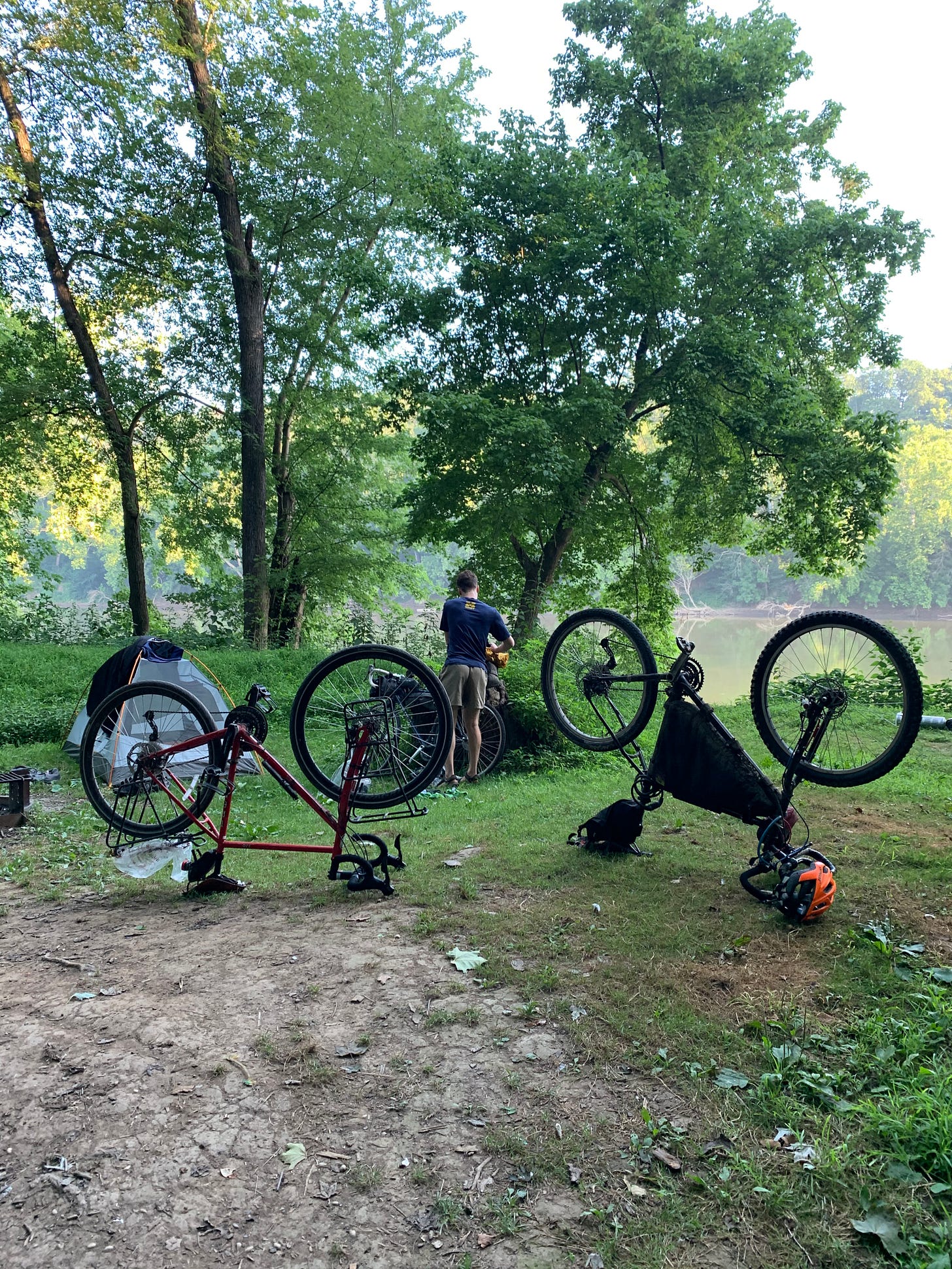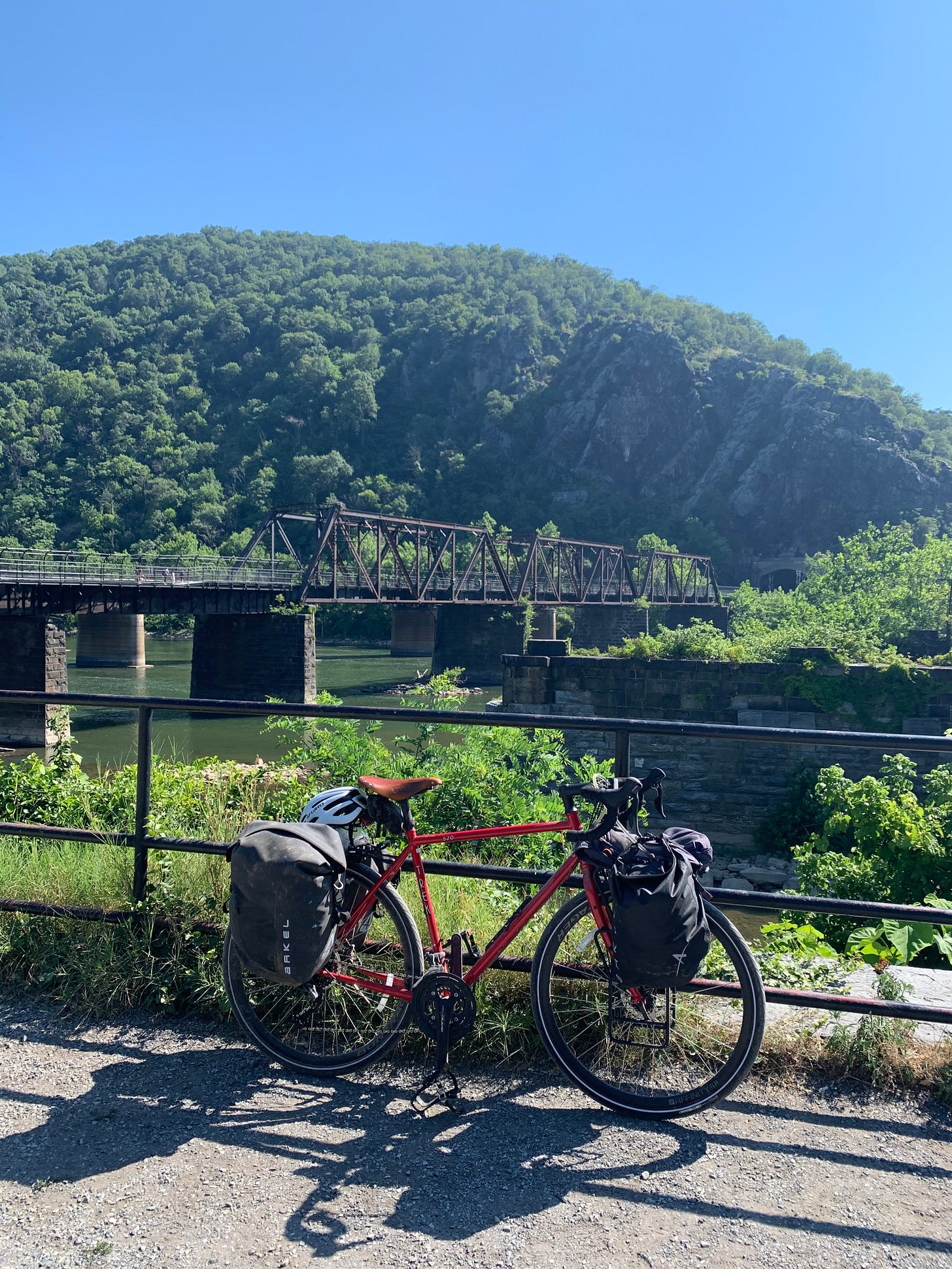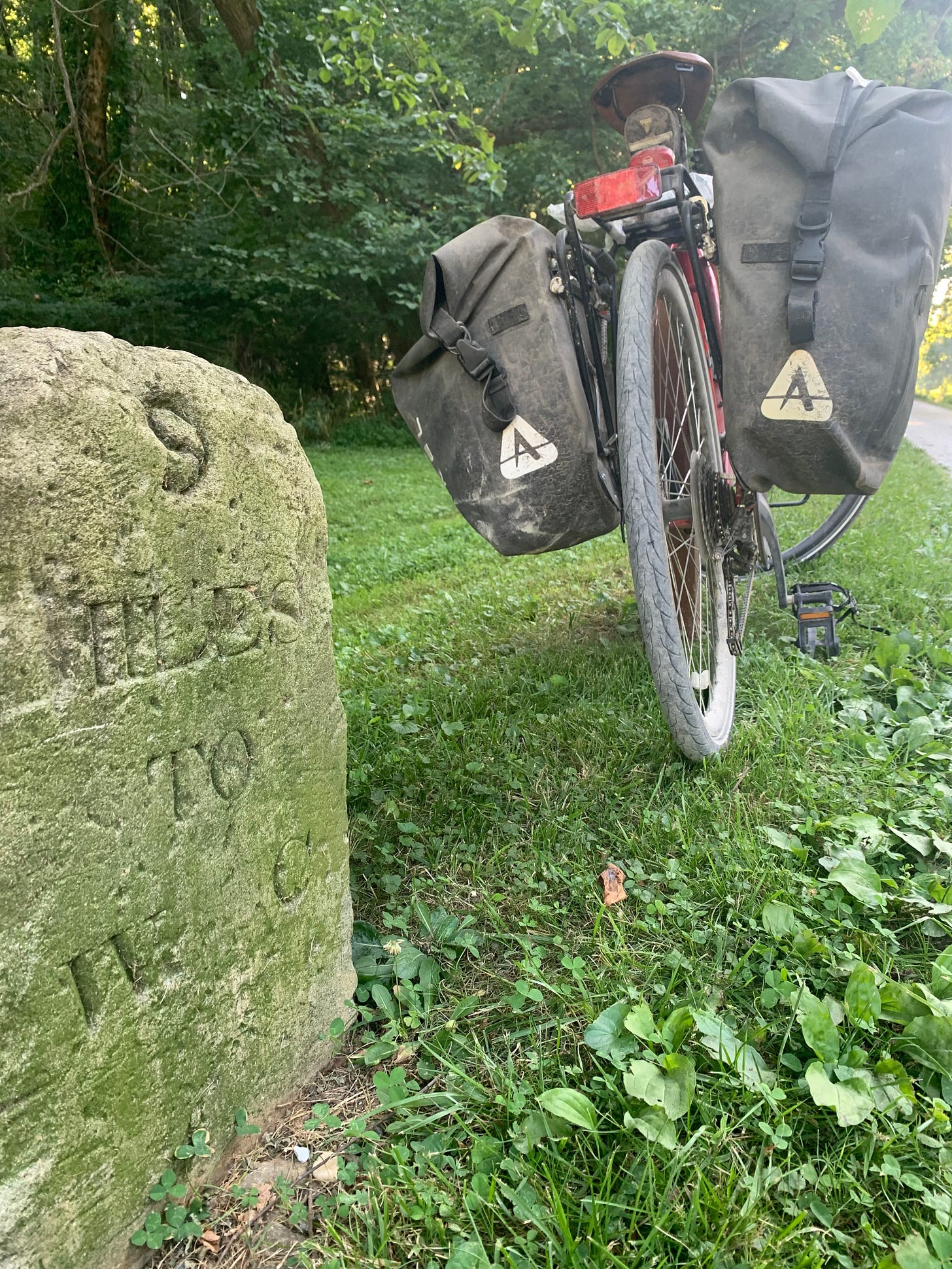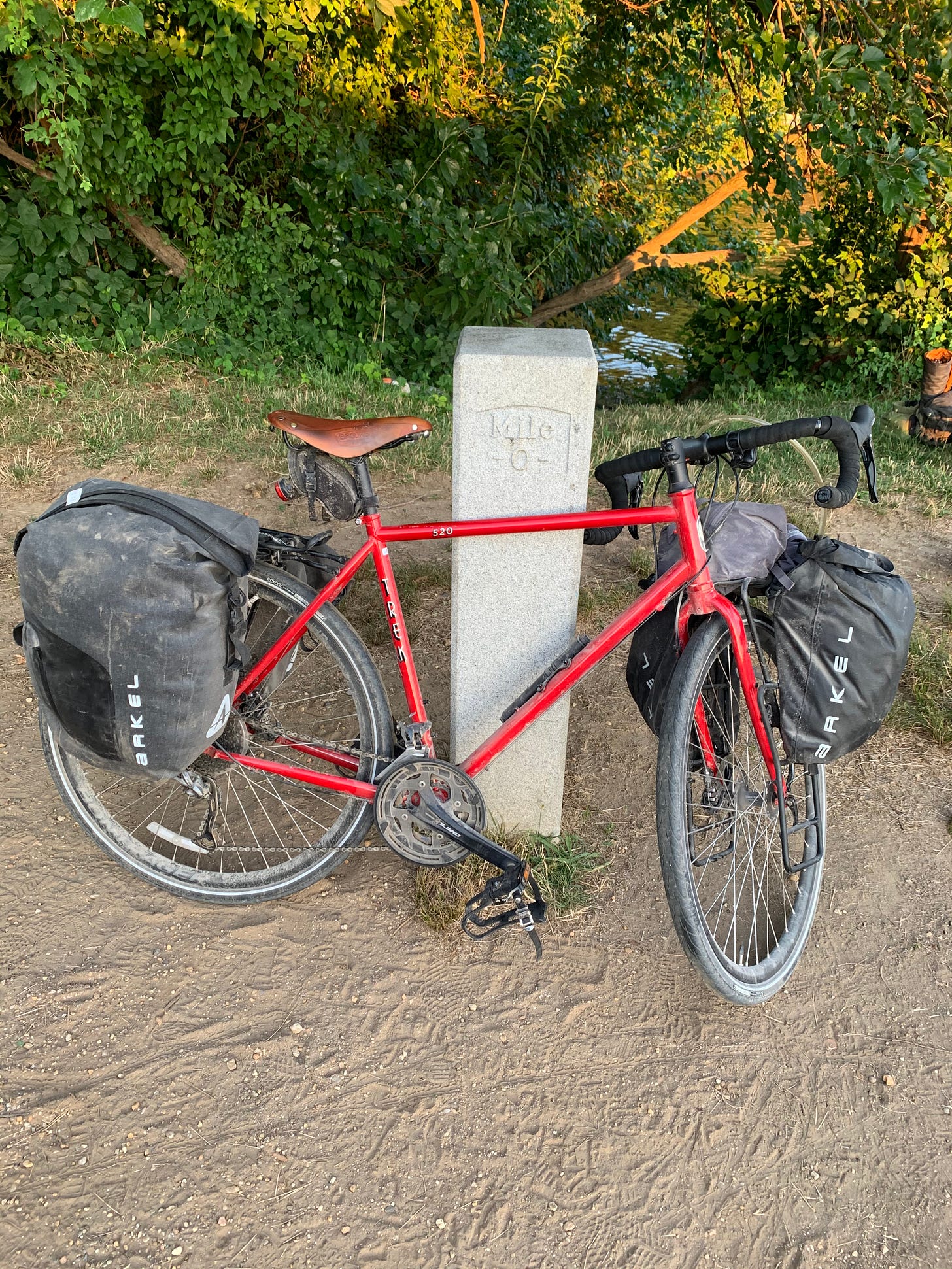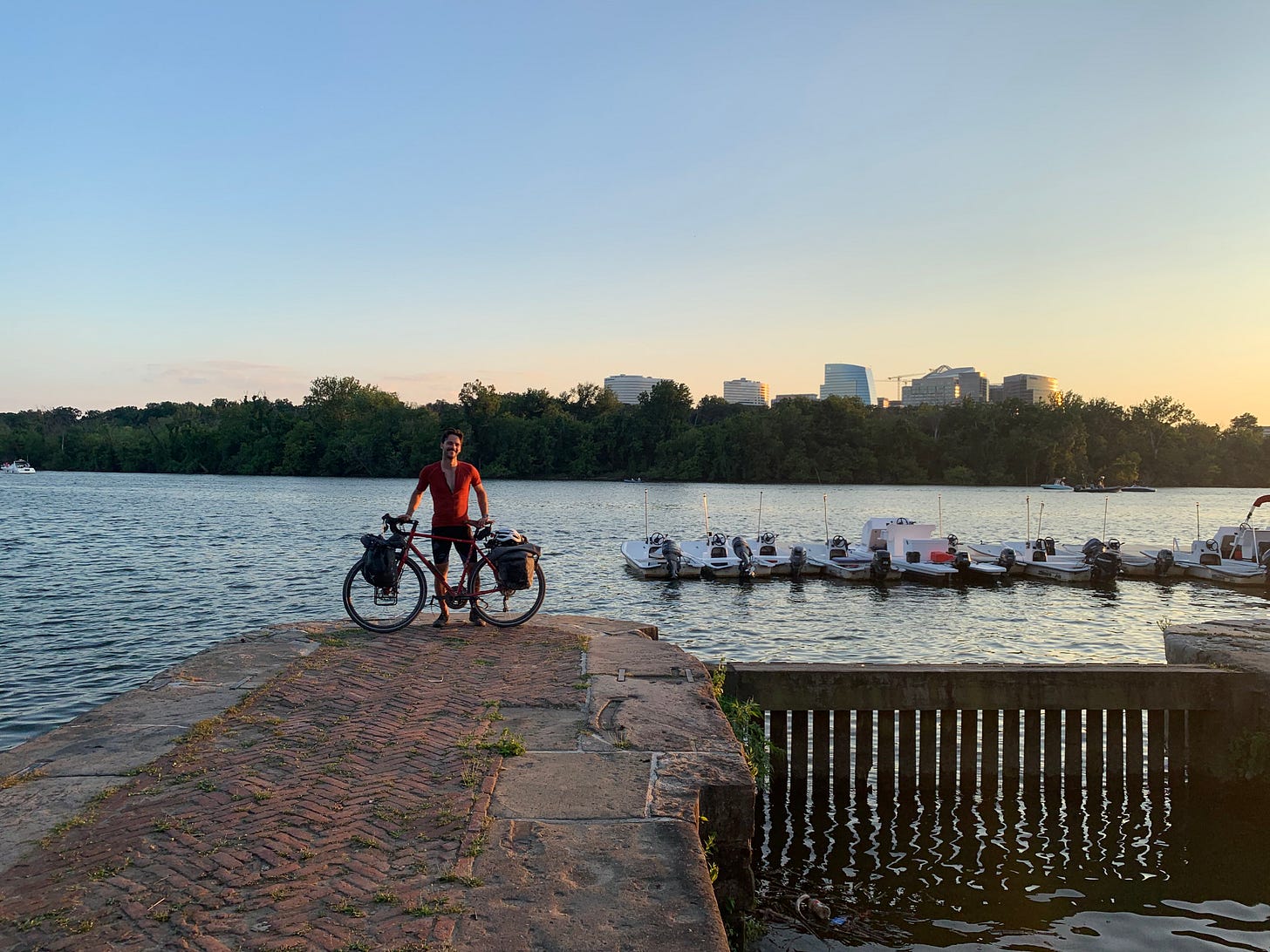The last day
I woke up 80 miles from my apartment. Eighty miles on gravel is just short enough to be attainable, just long enough to demand diligence. But we three were of the same mind that morning: to set up camp just ten or twenty miles from home would be humiliating. We’d make it home today, even if it took us deep into the night.
Self-care is second only to bike-care, and that morning we hydrated our bikes, drowning our chains with lube and watching the accumulated muck of our last few days fly off the cassette in every direction. A clean chain is more than beautiful; it’s downright divine. Some folks derive joy from the purring of a sports car engine, but I’ll never find that as satisfying as the quiet whir of a spotless chain.
Bikes clean, last oatmeal packets eaten, we set off on our last day.
What was quickly apparent: we had new energy today. It was the drive of the last lap around the track, when the cheers of an invisible crowd compete with the roar of the internal push—the moments in the race when you hit, paradoxically, peak stride and peak exhaustion. In those moments, you’re pushed—or pulled—by an unconscious power.
We biked through places with names drenched in 1862’s blood—Antietam, Sharpsburg, the curve of Horseshoe Bend. We went a few more years back in time and stopped for lunch in Harper’s Ferry, where John Brown tried to start a slave rebellion but instead lit the powder keg of the Civil War. “Revolution comes; not the expected one, but another, always another.”
I’ve been to Harper’s Ferry many times. I cannot visit the town without thinking about a few things:
John Brown was one of the only sane people in the US in 1859.
If John Brown were alive today, would he pick up a rifle for any cause? I have the sense he wouldn’t fit neatly into either party, regardless of what they tell themselves.
In the coming decades, will the strain of the climate crisis, or the resulting refugee crisis, give rise to a new breed of John Browns, who see direct, violent action as the only alternative to the slow grind of international bureaucracy? How will society receive them? Will they fight for the refugees, or against them?
I am always chilled by the Heyward Shephard memorial. Erected by the Daughters of the Confederacy in 1931, it stands in central Harper’s Ferry and says the following:
This boulder is erected by the United Daughters of the Confederacy and the Sons of Confederate Veterans as a memorial to Heyward Shepherd, exemplifying the character and faithfulness of thousands of negros who, under many temptations throughout subsequent years of war, so conducted themselves that no stain was left upon a record which is the peculiar heritage of the American people, and an everlasting tribute to the best in both races.
There are too many things to say about this, a monument from the Confederates’ descendants thanking slaves for nobly resisting the “temptation” toward rebellion. We humans are ridiculously bad at recognition, real recognition.
On a happier note, Harper’s Ferry has a history-of-candy shop call True Treats with sweets ranging from ancient Babylonian candied dates to 90s Fruit Stripe gum. This alone is worth the pilgrimage.
We left town, canal to the left, Potomac to our right.
The energy did not stop. I don’t remember the afternoon at all. We simply churned mile after mile under wheels, drawn home by a preternatural pull. We found ourselves in familiar territory: Great Falls Park, packed with day trippers. After days alone, the crowds felt alien.
That sense of alienation only grew as we pedaled closer to DC. It’s amazing how a few days of near-solitude transform the familiar into the strange. Some of it was indeed new—lockhouses I’d never seen, Potomac islands I didn’t know existed, a bridge full of 14-year-olds jumping into the water to impress their crushes and calling each other pussies if they didn’t. We jumped, too.
But suddenly we rounded a corner and saw Georgetown straight ahead, beyond which sat the canal’s end. We stopped to buy a few six packs, then packed in the last few hundred meters through Georgetown, our dirty sweat-soaked jerseys a marked contrast with the designer brands around us.
Mile 0 isn’t easy to find. Even those of you who live in DC probably haven’t been there. Go down the Waterfront towards the city proper, past Thompson Boat Center, and you find yourself on a tiny peninsula. There, like a hidden Hindu shrine, sits the marker for Mile 0, where the canal and river finally put their differences aside.
We’d been prepared for a final sprint through the dark, but the sun was only now setting over the city. We let our bikes down, cracked open beers, and sat. Pittsburgh, four days and 335 miles ago, felt like ancient history. We retold stories, laughed with each other, basked in the freedom that comes with the knowledge that in that moment, there’s nothing else you need to do, nowhere else you need to be.
We should allow ourselves to recognize that most life-changing events are slow or small—more like adjustments, but changes nonetheless. There’s a time for the drama of the ayahuasca retreat or the near-death experience, but most of the time we’re lightly leaning one way or the other, trying to avoid a root down the path, or—like me—steering right into it.
For all three of us, this trip was a pivot point: a time between jobs and countries for Oliver and me, the prelude to Adrian taking his musical work more seriously and leaning into the musical community he was in the early stages of fostering. We got through 2-3 beers each, reflecting on each of our trails ahead. I didn’t want the moment to end.
But then the sun set. It was time to go. We picked up our bikes, said our goodbyes, and biked the old roads home.




